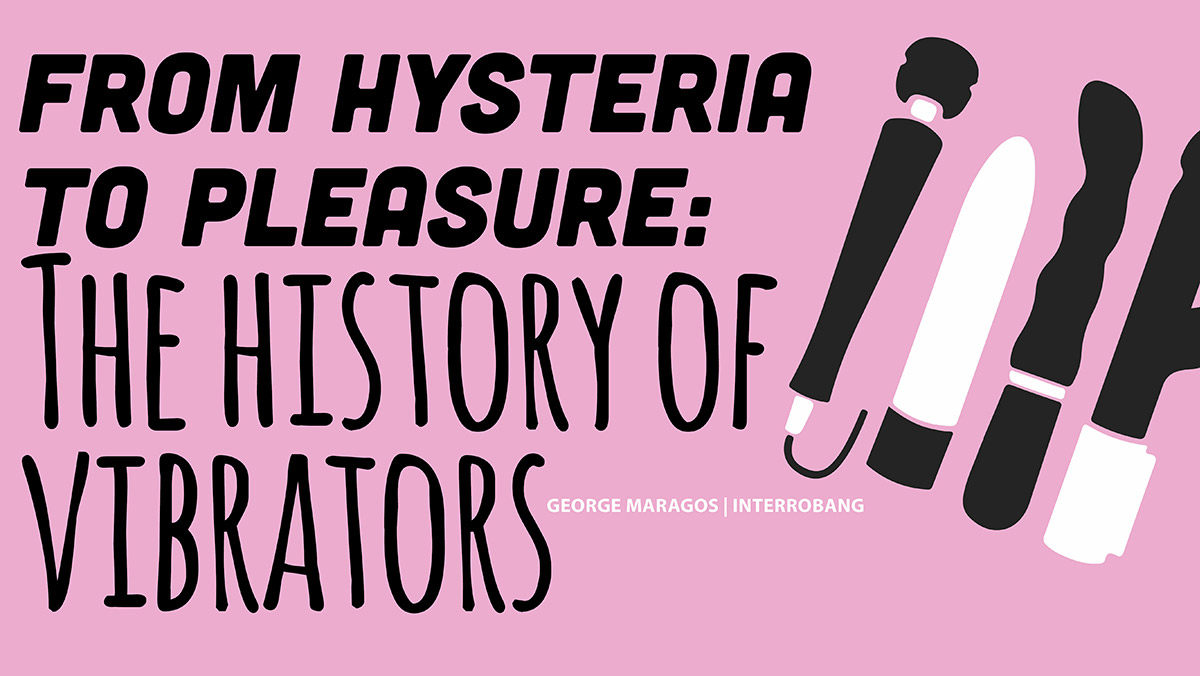From hysteria to pleasure: the history of vibrators
 CREDIT: FANSHAWE STUDENT UNION PUBLICATIONS AND COMMUNICATIONS DEPT.
CREDIT: FANSHAWE STUDENT UNION PUBLICATIONS AND COMMUNICATIONS DEPT.The first sex toys were not used for sex, they were phallic ornaments thought to ward of evil spirits and help gardens grow. According to an article titled, “The sex toys dating back 28,000 years: Ancient phalluses made from stone and dried camel dung started trend for sex aids”, from dailymail.co.uk, sex toys were first made of bone, stone, mud or dung. Nowadays phallic shaped toys are used for sexual pleasure purposes and are more than penis shaped appendages. There are a variety of different types and designs of sex toys including lubes, oils, edible undies, dolls, bondage costumes, cock rings, anal beads, and whips, just to name a few.
The word dildo came from the Latin word “dilatare”, from the Latin meaning to dilate or open up. The classic rubber dildos didn't come around until the mid-1800s.
The first vibrator came to France in the 18th century, called the tremoussoir and was a hand-held, wind up vibrator that operated much in the same way a hand crank egg beater does. In 1869, American physician George Taylor, created a steam powered vibrator called the “manipulator”.
In 1880, the electromechanical vibrator hit the scene, an invention depicted in the movie titled Hysteria (Greek for uterus) named after the condition it claimed to treat. In the movie, the inventor Dr. Granville begins working under Dr. Dalrymple who explained that warm baths, cold baths, water jets, mesmerisation, hypnosis and horseback riding have all been used in the past as treatment methods for hysteria. Victorian era doctors questioned the existence of the female libido and would recommend the use of sex toys to alleviate stress.
The cause of hysteria was supposedly a woman's uterus wandering around in her body, resulting from a lack of sex. Hysteria symptoms included anxiety, sleeplessness, irritability and erotic fantasies.
The symptoms were so vague and broad that virtually every woman could be seen to have hysteria.
According to the lehmiller.com article “The History of Motorized Sex Toys”, treatment for hysteria was a pelvic massage ending in hysterical paroxysm (orgasm). The alternative at the time was institutionalization or a surgical hysterectomy.
“By fierce external stimulation, we're able to induce the painpleasure reaction thereby inducing a hysterical paroxysm coxing the uterus back into its normal position,” Dr. Dalrymple said, in the movie Hysteria.
The first electronic vibrator was developed to decrease the length of visits to the doctor's office.
In the film, Dr. Granville had an unsuccessful treatment (the patient didn't orgasm) and was subsequently fired. Later that day, while playing with an electric feather duster, he noticed it made his hand feel warm and tingly. He tweaked the machine into the first electromechanical vibrator, was given his job back and went on to treat more patients in an even shorter time.
However, by the end of the film, Dr. Granville reveals that hysteria was a bogus condition.
The personal vibrator gained popularity once electricity became widely available.
Interestingly enough, the vibrator became the fifth device approved for use in the home after the sewing machine, fan, tea kettle and toaster. They were even in the modern home before the vacuum or television.
The vibrator, the more widely recognizable sex toy, began as a therapy device.
In 1968, when the Magic Wand was released, personal sex toys quickly became popular.
Nowadays, sex toys are more accepted and have a more discreet appearance, as well as being able to do a lot more than they could in the past. Sex toys are now developed to be selflubricating, gold-plated and remotecontrolled, with options to add attachments. They can also be programmed to vibrate to your favourite song, while others can even be used as an alarm clock.
If there's one thing for certain, today's vibrators and sex toys have come a long way since their creation.















